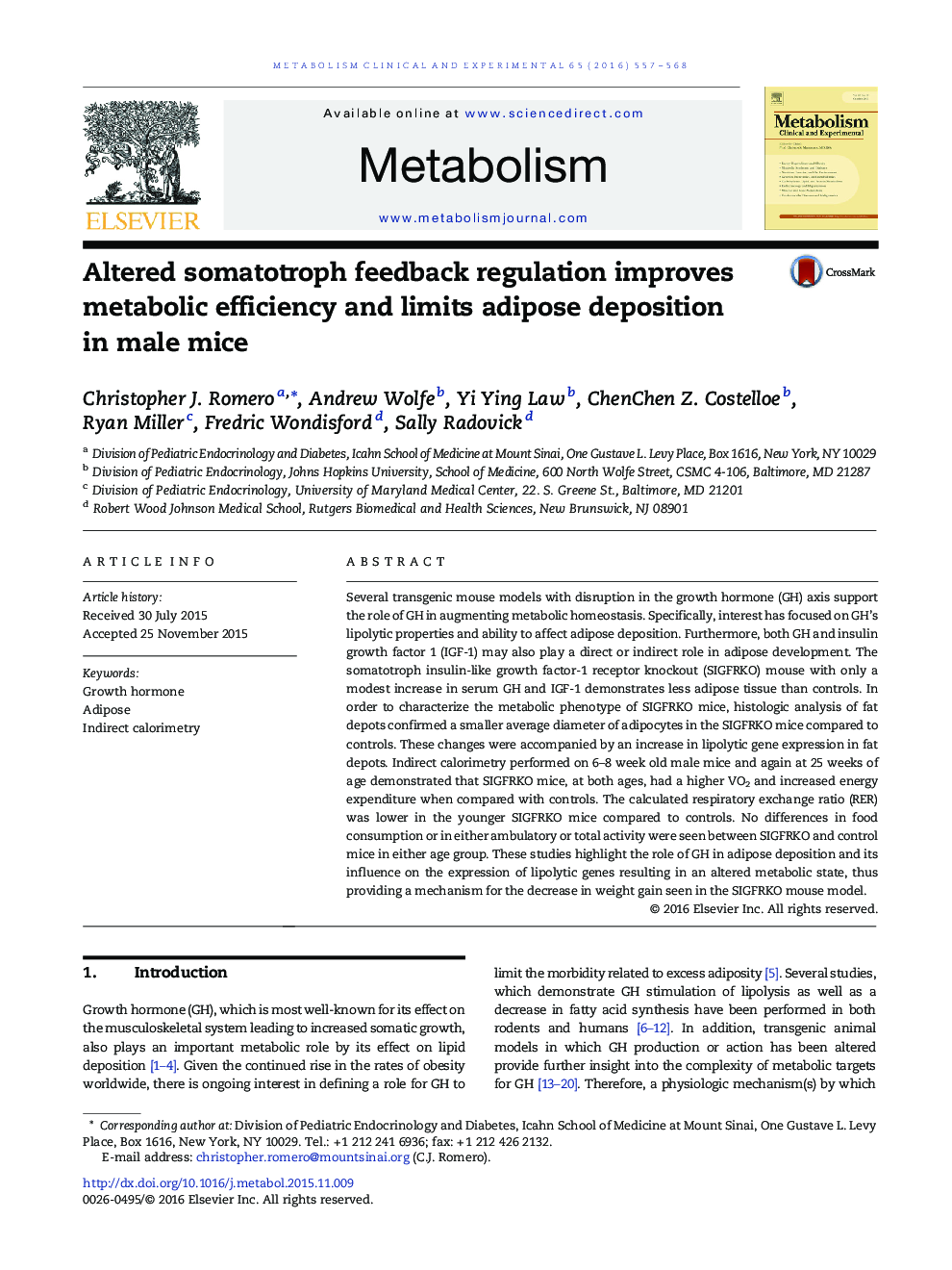| Article ID | Journal | Published Year | Pages | File Type |
|---|---|---|---|---|
| 5903292 | Metabolism | 2016 | 12 Pages |
Several transgenic mouse models with disruption in the growth hormone (GH) axis support the role of GH in augmenting metabolic homeostasis. Specifically, interest has focused on GH's lipolytic properties and ability to affect adipose deposition. Furthermore, both GH and insulin growth factor 1 (IGF-1) may also play a direct or indirect role in adipose development. The somatotroph insulin-like growth factor-1 receptor knockout (SIGFRKO) mouse with only a modest increase in serum GH and IGF-1 demonstrates less adipose tissue than controls. In order to characterize the metabolic phenotype of SIGFRKO mice, histologic analysis of fat depots confirmed a smaller average diameter of adipocytes in the SIGFRKO mice compared to controls. These changes were accompanied by an increase in lipolytic gene expression in fat depots. Indirect calorimetry performed on 6-8Â week old male mice and again at 25Â weeks of age demonstrated that SIGFRKO mice, at both ages, had a higher VO2 and increased energy expenditure when compared with controls. The calculated respiratory exchange ratio (RER) was lower in the younger SIGFRKO mice compared to controls. No differences in food consumption or in either ambulatory or total activity were seen between SIGFRKO and control mice in either age group. These studies highlight the role of GH in adipose deposition and its influence on the expression of lipolytic genes resulting in an altered metabolic state, thus providing a mechanism for the decrease in weight gain seen in the SIGFRKO mouse model.
